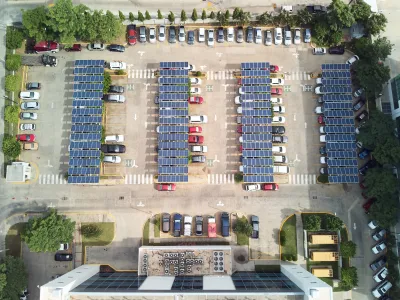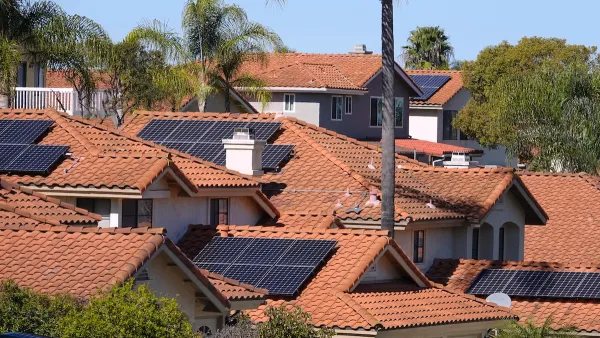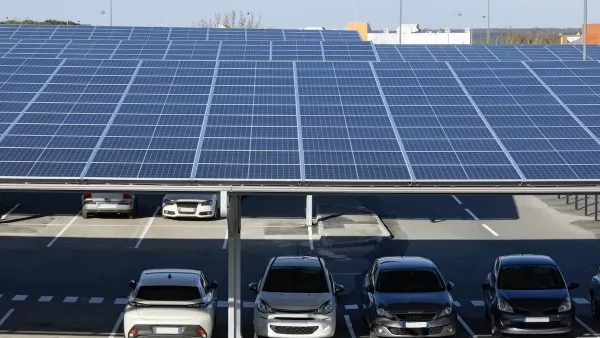Environmentalists are raising the alarm about massive solar farms in the unspoiled desert. Why not install more solar panels along state-owned highways and in parking lots instead?

In an editorial published last week, the Los Angeles Times Editorial Board calls on California leaders to “think creatively and find ways to put more solar energy in already built-out places, including rooftops and parking lots, canals and agricultural fields, so we can slow the climate crisis without harming sensitive land, like the habitat of threatened Joshua trees or Mojave Desert tortoises.”
And because of California’s high power costs and extensive road network, using highway right-of-way could make a major impact: “A 2020 study by University of Texas at Austin researchers found that because of California’s high electricity rates, it could generate more revenue than any other state from placing solar along its highway interchanges, more than $300 million a year.”
The board supports Senate Bill 49, state legislation introduced by state Sen. Josh Becker (D—Menlo Park), which would require the state to plan for installing solar panels along “underutilized” portions of right-of-way adjacent to state highways. “Senate Bill 49 would start to unlock the potential along California’s 15,000 miles of state highways, by giving Caltrans about two years to develop a plan to lease state-owned rights-of-way to utility companies or private developers to install solar panels, battery storage and transmission lines.”
The bill, which was passed unanimously by the Transportation Committee, includes financial incentives for property owners such as schools, businesses, and multifamily housing developments that would make it less costly to install solar parking lot canopies.
For the editorial board, “This idea should be a no-brainer for lawmakers.”
The proposal would follow in the footsteps of other states, including Oregon, Georgia, and Massachusetts, that have created similar programs, and countries like France, which recently mandated solar canopies on all parking lots with more than 80 spaces. “It just makes sense, economically and environmentally, to concentrate solar projects in areas that are already developed, especially if they are near cities, factories or other locations where there’s already demand for electricity,” the board writes.
FULL STORY: Editorial: California needs a lot more solar. Why not put panels along highways and parking lots?

National Parks Layoffs Will Cause Communities to Lose Billions
Thousands of essential park workers were laid off this week, just before the busy spring break season.

Retro-silient?: America’s First “Eco-burb,” The Woodlands Turns 50
A master-planned community north of Houston offers lessons on green infrastructure and resilient design, but falls short of its founder’s lofty affordability and walkability goals.

Delivering for America Plan Will Downgrade Mail Service in at Least 49.5 Percent of Zip Codes
Republican and Democrat lawmakers criticize the plan for its disproportionate negative impact on rural communities.

Test News Post 1
This is a summary

Test News Headline 46
Test for the image on the front page.

Balancing Bombs and Butterflies: How the National Guard Protects a Rare Species
The National Guard at Fort Indiantown Gap uses GIS technology and land management strategies to balance military training with conservation efforts, ensuring the survival of the rare eastern regal fritillary butterfly.
Urban Design for Planners 1: Software Tools
This six-course series explores essential urban design concepts using open source software and equips planners with the tools they need to participate fully in the urban design process.
Planning for Universal Design
Learn the tools for implementing Universal Design in planning regulations.
EMC Planning Group, Inc.
Planetizen
Planetizen
Mpact (formerly Rail~Volution)
Great Falls Development Authority, Inc.
HUDs Office of Policy Development and Research
NYU Wagner Graduate School of Public Service





























